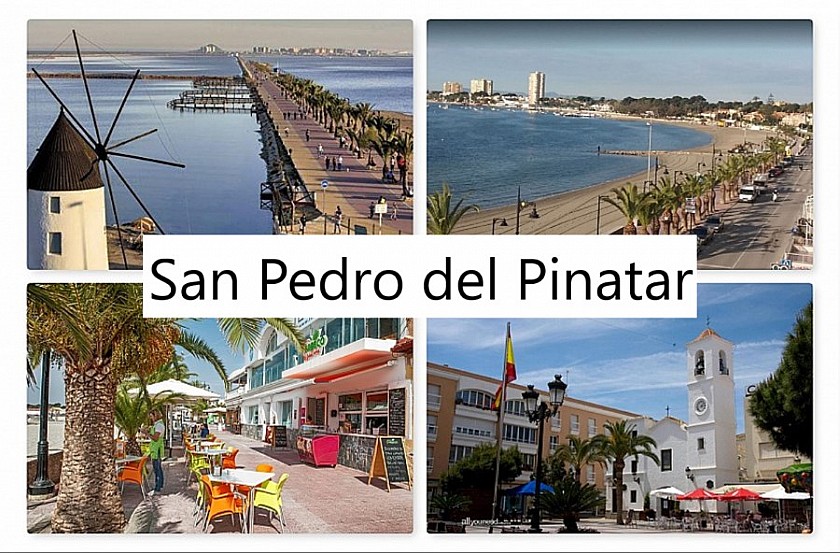
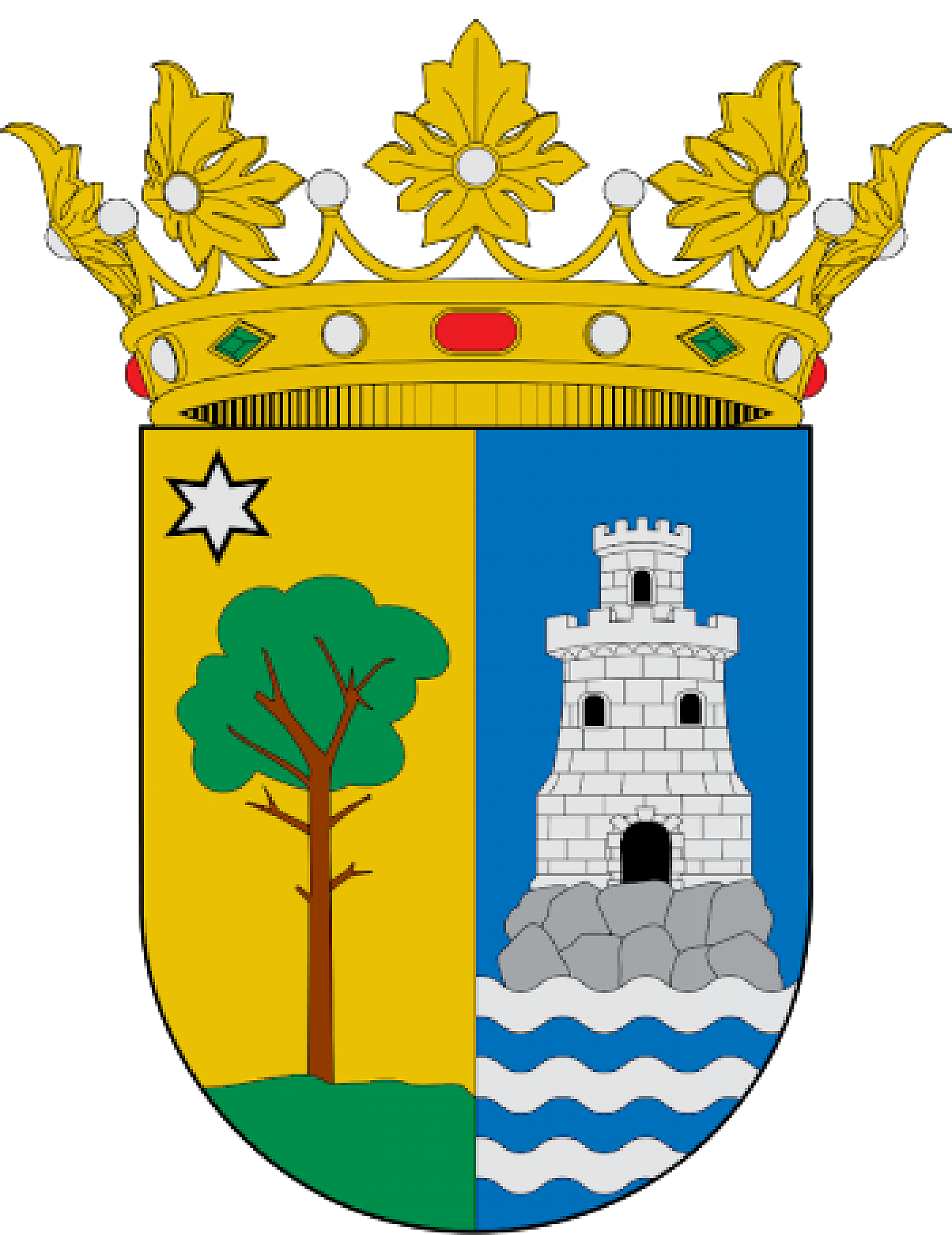
Population:
25.167 (2018)
Flag:

Watch:
Video San Pedro del Pinatar
To San Pedro del Pinatar belongs:
Location: Kust
Torrevieja: 22 km
San Javier airport: 18 km
San Pedro in a nutshell:
It was a simple twist of fate that heralded the beginning of tourism for San Pedro del Pinatar. After a series of natural disasters, including an earthquake, the region of Mucia and Alicante was in the throes of a cholera epidemic in the 19th century. By pure coincidence, San Pedro was spared the disease that caused so much death and destruction. Driven by desperation, wealthy families from especially Murcia and Cartagena bought large tracts of land in San Pedro in an attempt to escape the clutches of cholera.
That was a long time ago, but those families and many after them continue to return to the Mar Menor especially in summer. The first tentative steps in developing a thriving tourism industry had been taken. We fast forward from those reluctant steps to the present. Times have changed. Now San Pedro is an established name in the tourist world. The most northerly place in the province of Murcia is nowadays a magnet for visitors from all over Europe thanks to a tasty cocktail of a beautiful nature reserve (the salt lakes), an attractive water sports area (the Mar Menor), health (the mud baths), a great climate and close by two international airports (San Javier and Alicante).
Tourists are very important to San Pedro economically, but the municipal treasury can also count on income from the salt industry, fishing with an important fish auction and the agricultural area.
To say that San Pedro has had an eventful history is an understatement. The march towards present prosperity was one of many falling and getting up again. The first evidence of life in and around San Pedro goes back 5,000 years. In the days when the Mar Menor was still an open bay of the Mediterranean, the inhabitants of that time lived by gathering seafood and hunting in the campo.
Before the beginning of the era followed the periods of simple trade with seafaring civilizations. It was successively the Phoenicians and the Greeks who left their mark on San Pedro with their presence. Finds of mainly ceramics, vases, coins and utensils date from that time. The most important find is probably the Phoenician shipwreck off the coast of La Manga.
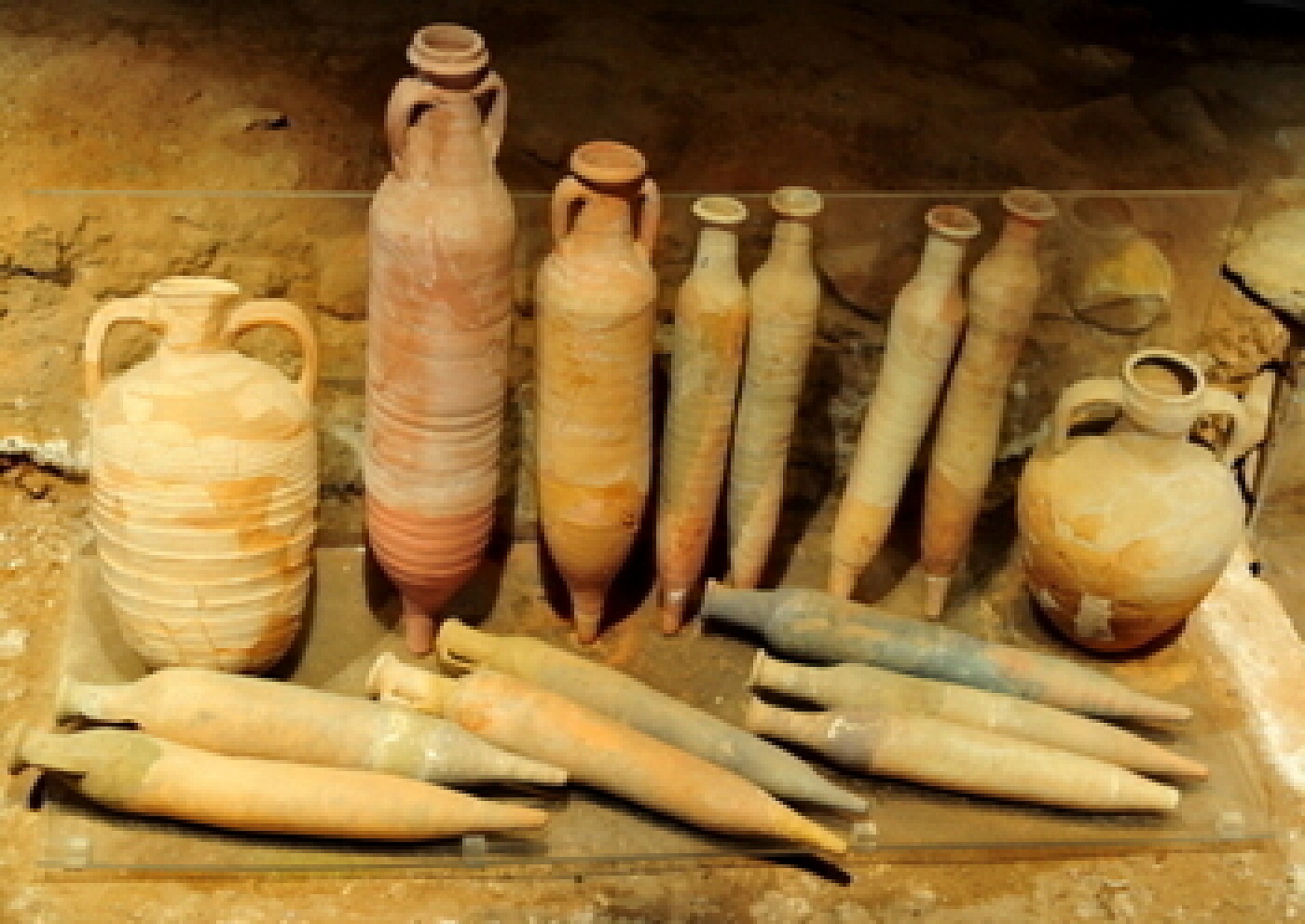
Still before the era, the community was groaning under the yoke of both the Cartagenians and the Romans, who fought each other in the area. A long period of domination began with the victory by the Romans. This time brought some prosperity in addition to oppression. The Romans discovered the potential of the region's silver and lead mines and the salt industry. They developed those industries and provided a rapid trade route with the construction of the long Via Augusta, the road that ran from southern Cadiz to France.
The subsequent rulers were the Moors, who held sway from the 8th to the 13th century. One of their positive contributions was a special fishing method, which is still used to this day. With the victory of the Christians over the Moors, it seemed finally to come to rest. But not for long. Defeated and humiliated Moors regularly carried out pirate attacks on the area from Africa. That led to the depopulation of the coastal strip. The residents were afraid of the pirates and took refuge in the agricultural hinterland.
Now in the 21st century, San Pedro is finally released from all its misery.
The salt lakes, aka the Salinas and Arenales Regional Park, is one of San Pedro's main attractions. Regardless of the time of year, the 856-acre sprawling area is a popular destination for recreation and relaxing activities. Five well recognizable walking and cycling routes have been mapped out in the park. This gives visitors the opportunity to experience what the lakes have to offer as optimally as possible. A visit to the special visitor center will certainly help. In the center one can see a model of the park, which shows at a glance the enormous variety of the area. From photos of the special ecosystem, developed by the Romans since the salt mining activities, one can learn a lot about the special flora and fauna in the park.
What makes the Park Salinas and Arenales especially special is the fact that work and a healthy natural environment go together so smoothly. Despite the salt extraction, with an annual production of between 75,000 and 100,000 tons, many water birds (flamingos, cormorants, grebes, lapwings, terns and ducks) find almost ideal living and breeding conditions here.
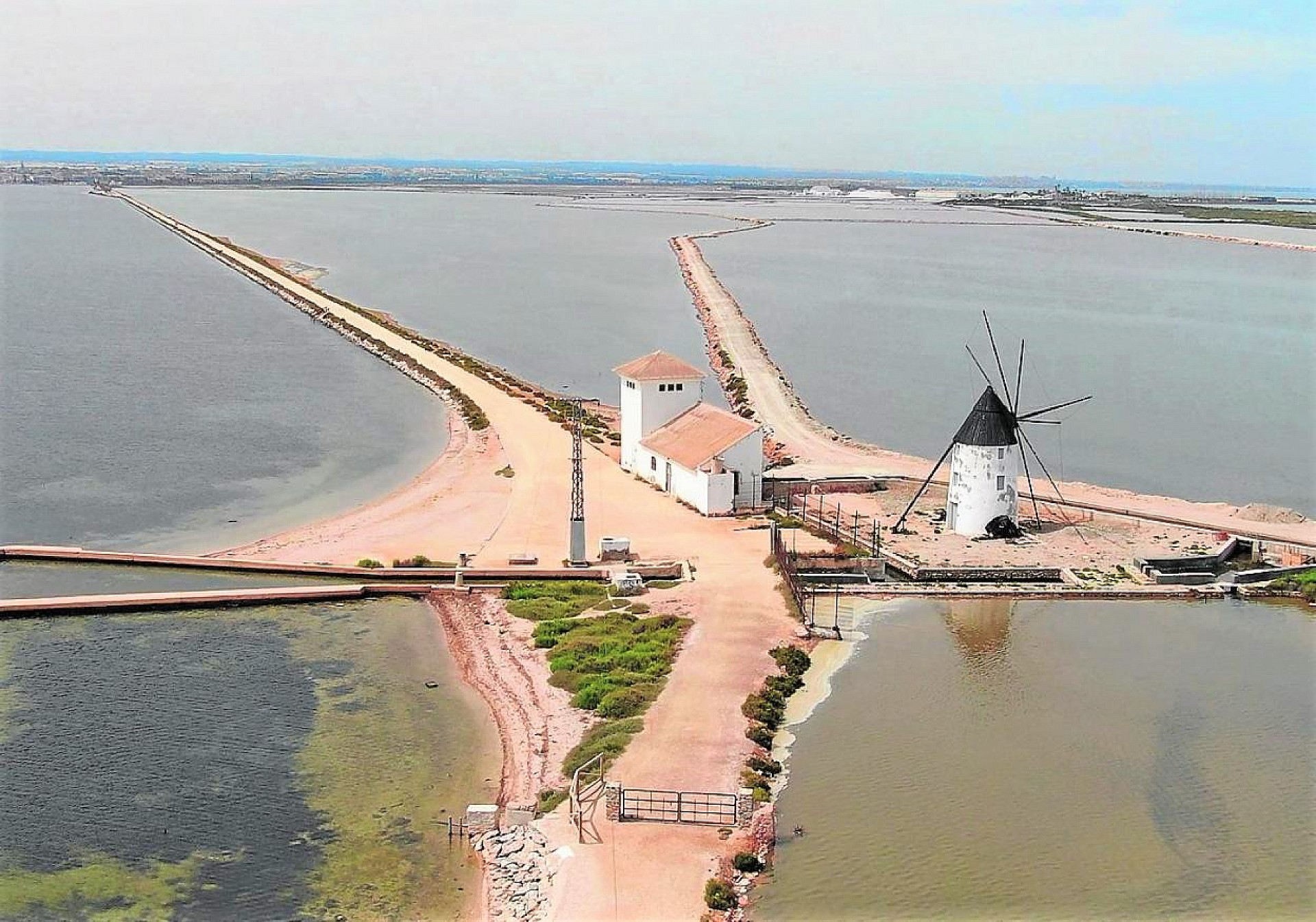
There are some 'objects' in the park that, like beacons, give an extra dimension to the otherwise flat area. These include two mills (the Quintin and Calcetera) and the white salt hills. Anyone walking or cycling through the park can also take a look at the 'encanizades'. This is a traditional fishing method that the Arabs introduced centuries ago and is still used today. The encanizades can be seen at Punta de Algas. This is one of the locations where there is an interaction between the waters of the Mar Menor and the Mediterranean. The Arabs created a kind of labyrinth in which the fish became entangled. They based themselves on the migration instincts of different fish species and managed to catch them. And it still does.
San Pedro is the most northerly municipality on the Mar Menor. With an area of 170 km² and a coastline of 70 km, the Mar Menor (the 'Lesser Sea') is a saltwater lagoon of size. The water in the inland sea has a significantly higher salinity than the Mediterranean Sea. It is separated from the Med by a 22 km long strip of land: La Manga. The calm and relatively shallow water (maximum 7 meters) makes it very suitable for a variety of water sports. Add to this the more or less guaranteed wind during the afternoon hours and the conditions for sailors, windsurfers and kite surfers are almost ideal. For windsurfers, the water at La Mota Beach is the most popular place to pursue their hobby, as the water is well suited to reach reasonable speeds. If you want to go out by canoe, it is best to do so in the morning. Then the Mar Menor usually looks like an almost smooth water feature.
The other municipalities on the Mar Menor are San Pedro's neighboring municipalities of San Javier, Los Alcázares and Cartagena. All along the coast there are marinas, clubs, commercial establishments and schools where a large number of water sports activities can be practiced or lessons can be taken.
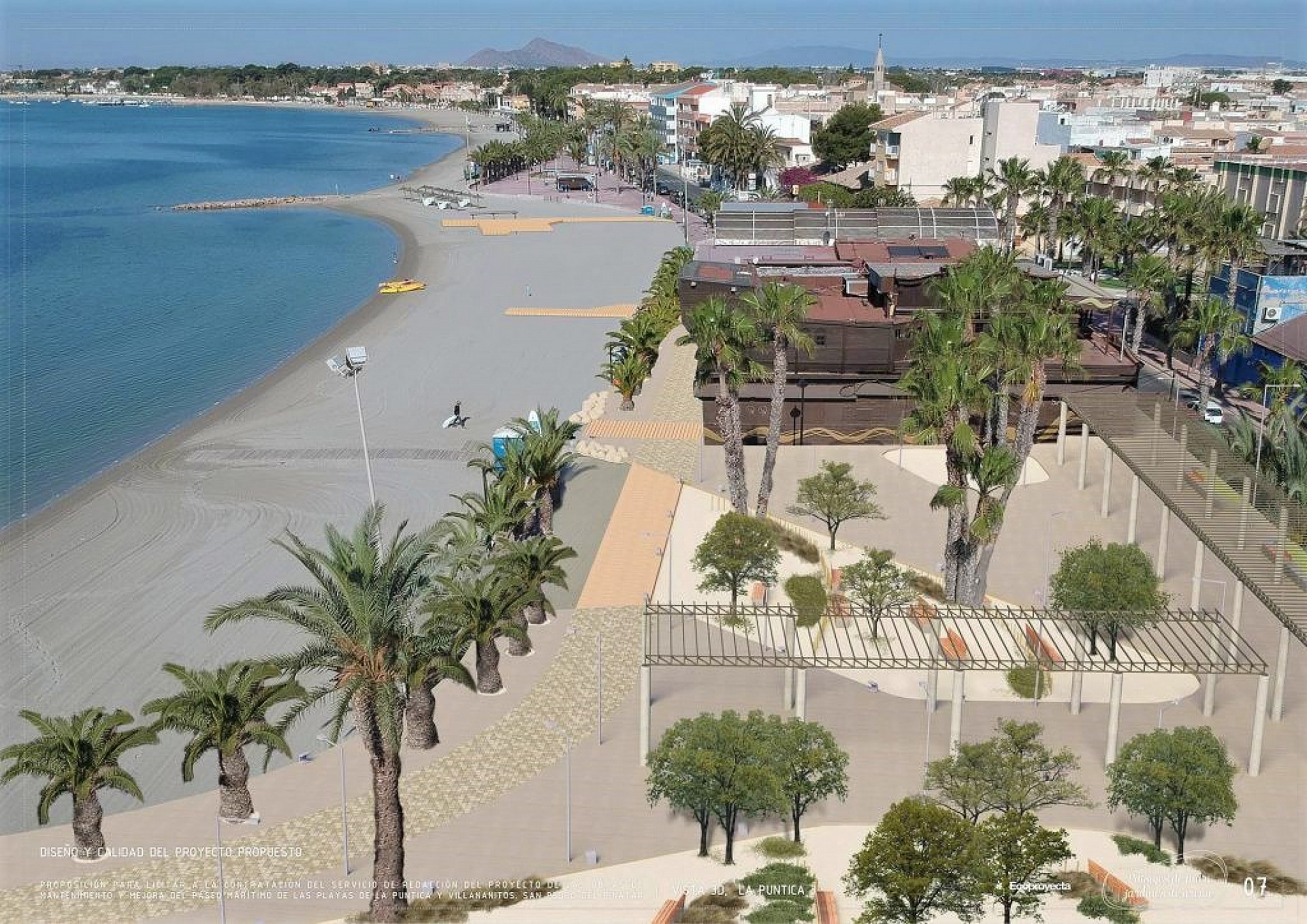
A long promenade runs along the coast of the Mar Menor. Beach guests therefore always have a terrace, bar or restaurant at hand if they want to exchange the sand for a snack.
San Pedro is not only known for the salt lakes and water enjoyment in the Mar Menor, but also for the healing effect of the mud baths. To the left of the pier at the Calcetera Mill, visitors can rub themselves in the mud, which has proven to be beneficial for alleviating a range of health complaints. People with rheumatism, arthritis, gout or skin conditions like to seek refuge there. The mud is also recommended for faster healing of small wounds.
Scattered around the town, San Pedro has a number of interesting buildings where the cultural and historical heritage can be viewed. The municipal museum is housed in the palace of the Baron de Benifayo. The building does indeed look like a medieval palace, complete with towers. The first owner, the Baron de Benifayo, was one of the many wealthy families who settled the town in the 19th century. Oddly enough, it is more popularly known in San Pedro as the Russian's house. That is a reference to one of the later owners.
In the large building you can admire a cross-section of San Pedro through the centuries. The collection includes ancient artifacts, fossils, finds from old shipwrecks and old tools once used by fishermen. You can also find objects found in the remains of the old Roman villa La Raya, the ruins of which are in San Pedro.
The Museum of the Sea elaborates on the importance of fishing for San Pedro. Here you will find a large collection of ship models, old photographs, a miniature version of the encanizades fishing method, remains of shipwrecks and maps of the sea. There is also a miniature version of the Quintin mill on display.
The casa de Culura is the main venue for theater and music performances. Exhibitions are also regularly held. The Aduana park is preferably used for various cultural events and concerts in the open air.
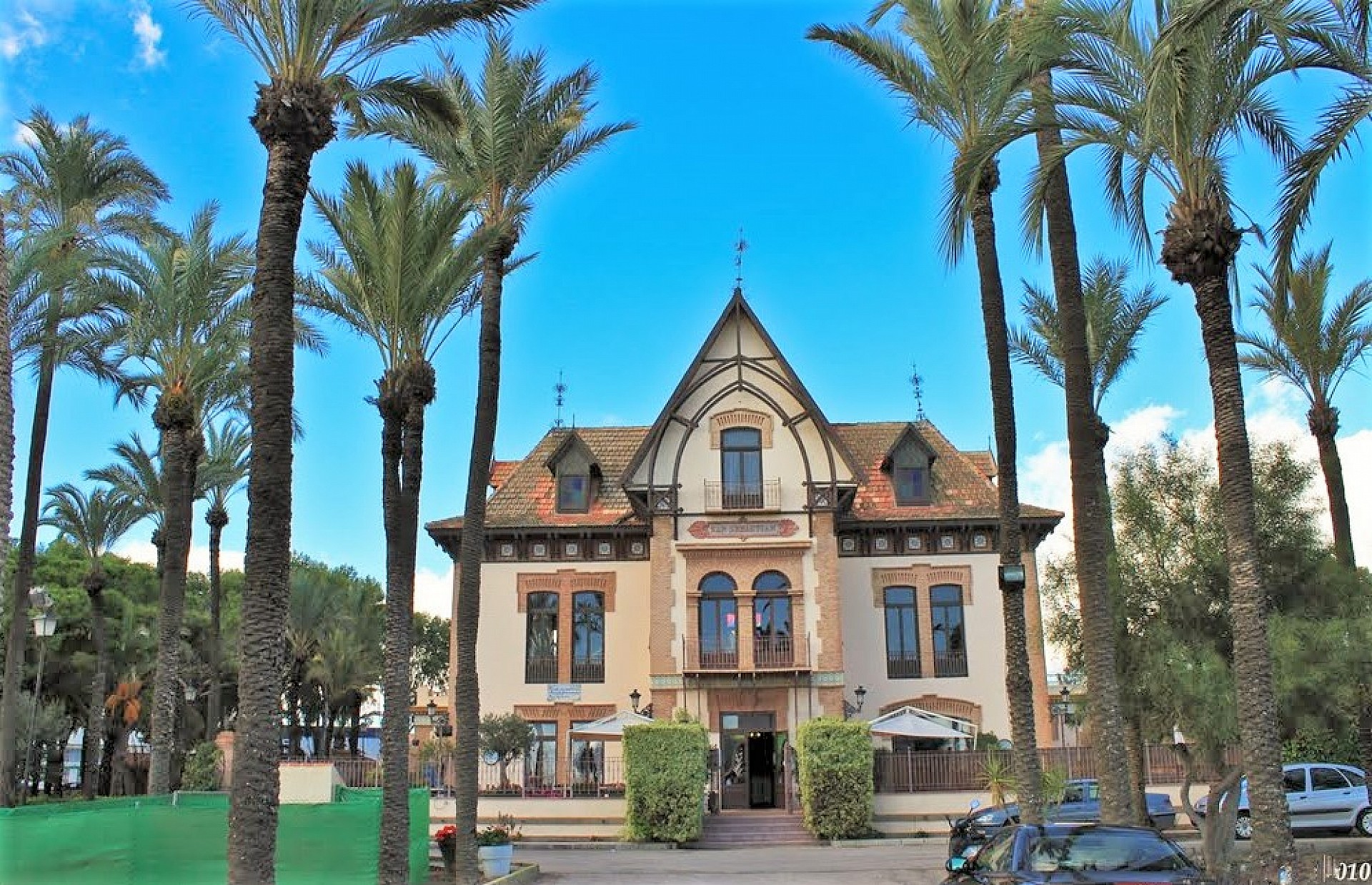
The odd one out is La Casa del Reloj. Although primarily a restaurant, it is probably better known for the paintings and sculptures of more than thirty national and international artists on display.
The most important celebration in San Pedro is that of the Virgin Carmen. This is held annually on July 16. Carmen is the patron saint of fishermen. While this celebration is celebrated pretty much all along the coast, San Pedro's version has the status of 'regional tourist interest' because of its grand design. The culmination of the day's events is a sea procession in which many fishing boats and pleasure craft participate. It all starts at seven in the morning with a brass band that runs through the town's streets. Afterwards there is a service in the San Pedro Apostol church. Afterwards, a long procession, with a life-size image of the saint in the lead, moves through the streets to the Mar Menor and Lo Pagán. There the statue is placed on one of the many decorated vessels and flower offerings are made at sea in memory of the local fishermen who found a sea grave there. Once back on the mainland, the procession retreats to the church and fireworks are lit.
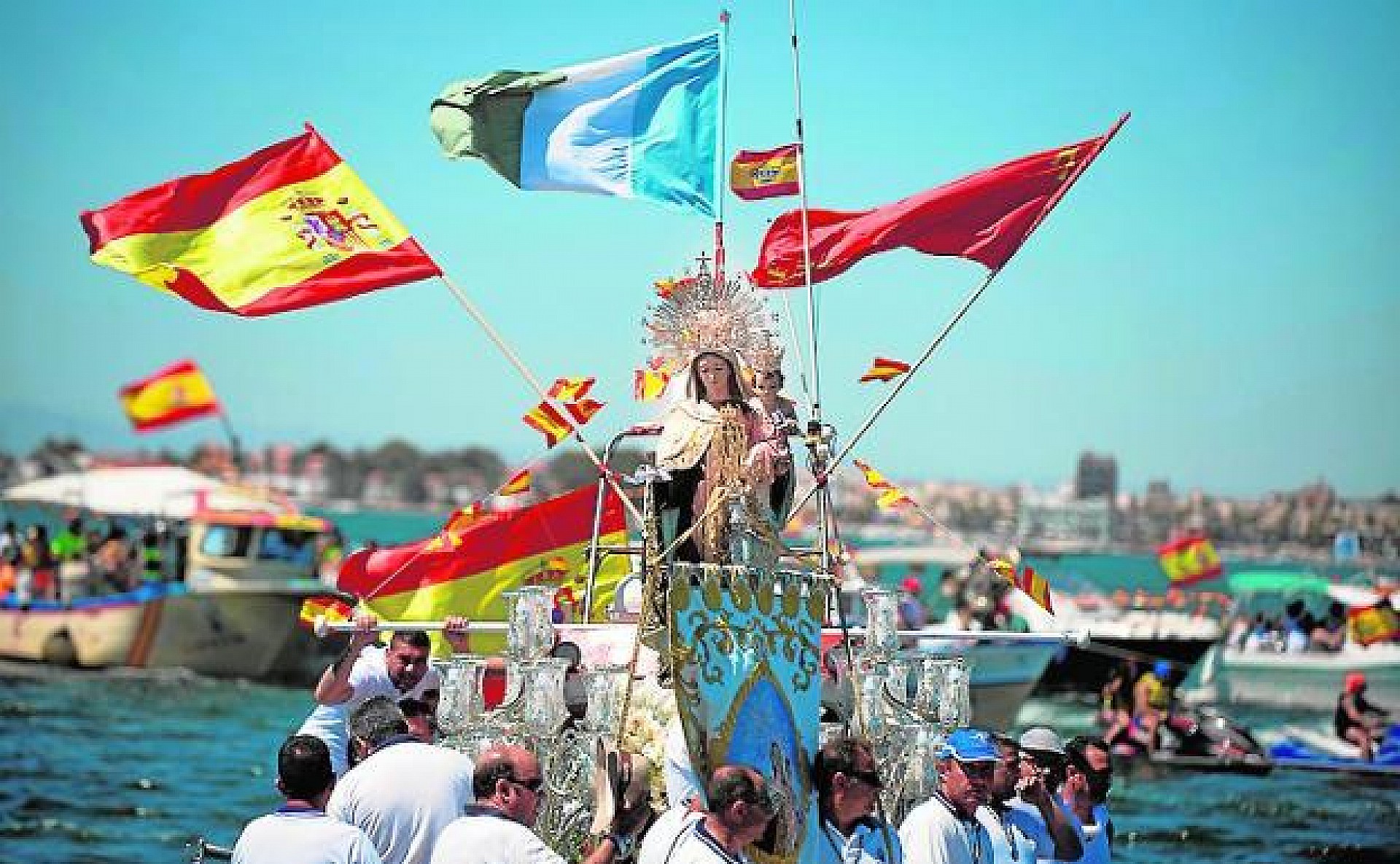
Easter week is another important celebration on the calendar. As everywhere in Spain, this is widely celebrated with different processions. A purely local feast is celebrated in El Mojón on August 16. That day, the local saint San Roque is honored with a procession and lots of music.
In addition, the Explanada Lo Pagán is used for a series of festive activities. This large open space close to the fishing harbor is where partygoers regularly gather. Craft markets are often set up here as well. At other times of the year, they are also held in the Reyes de España Park.